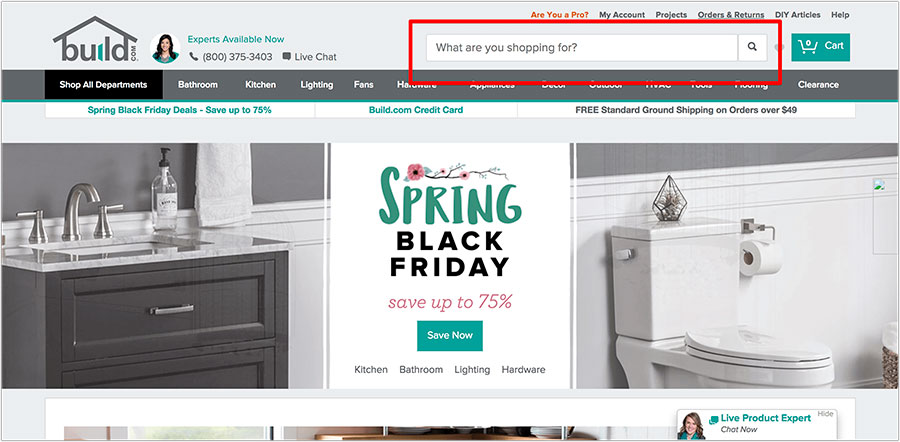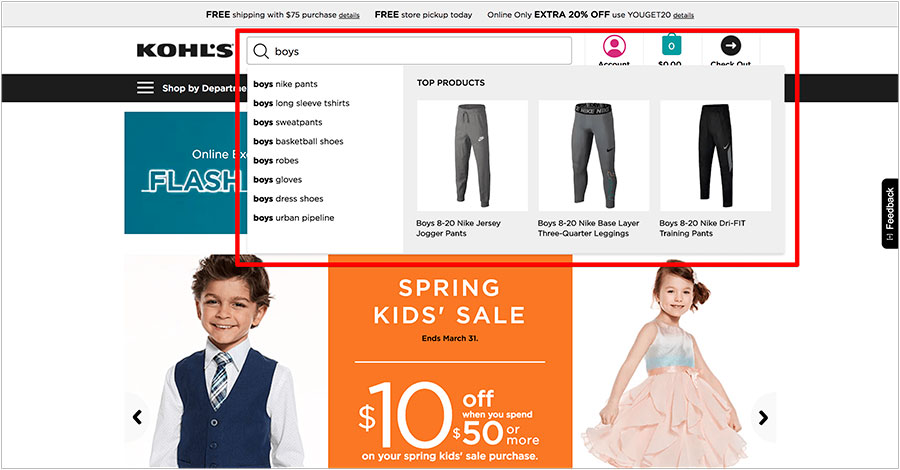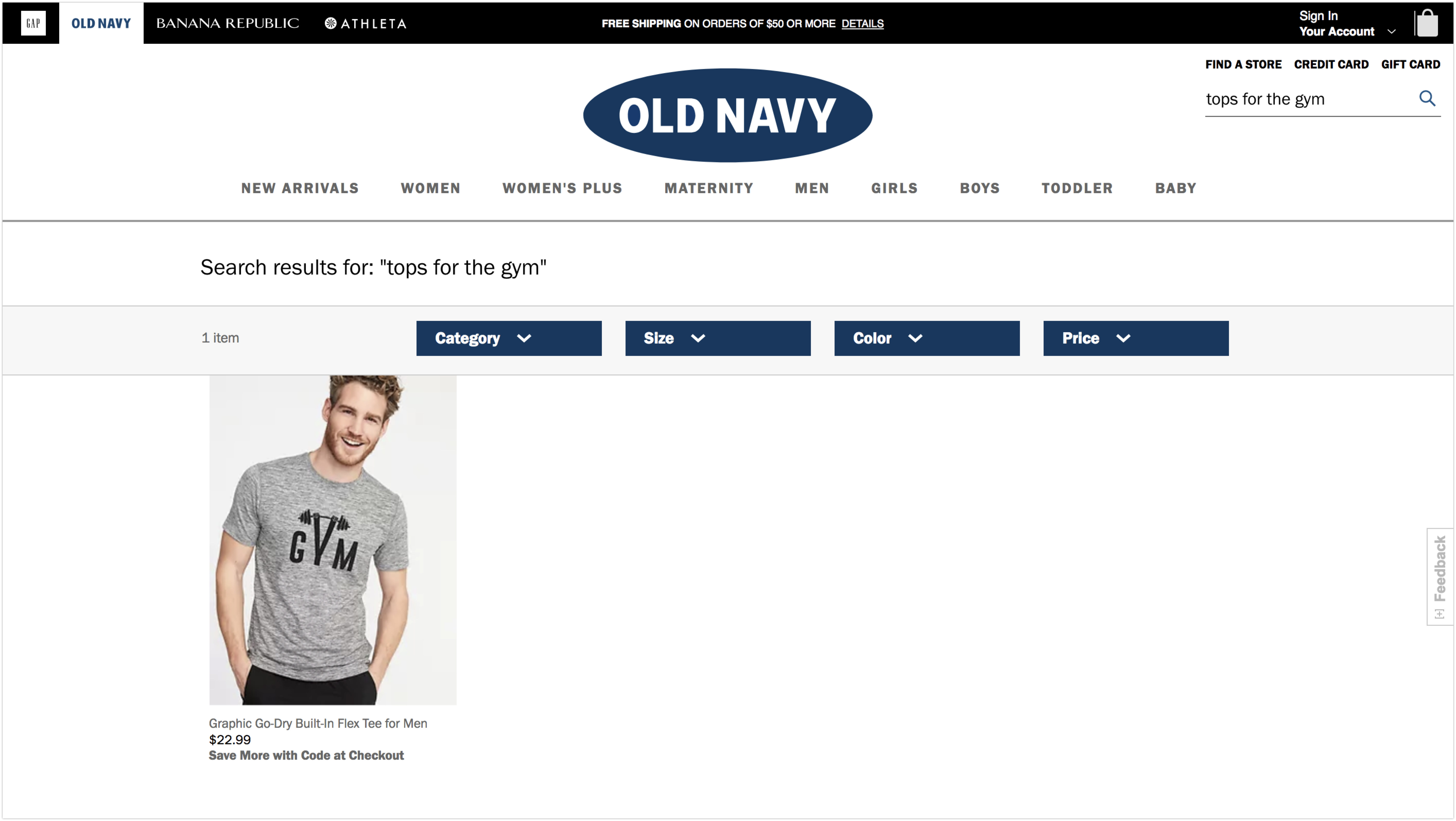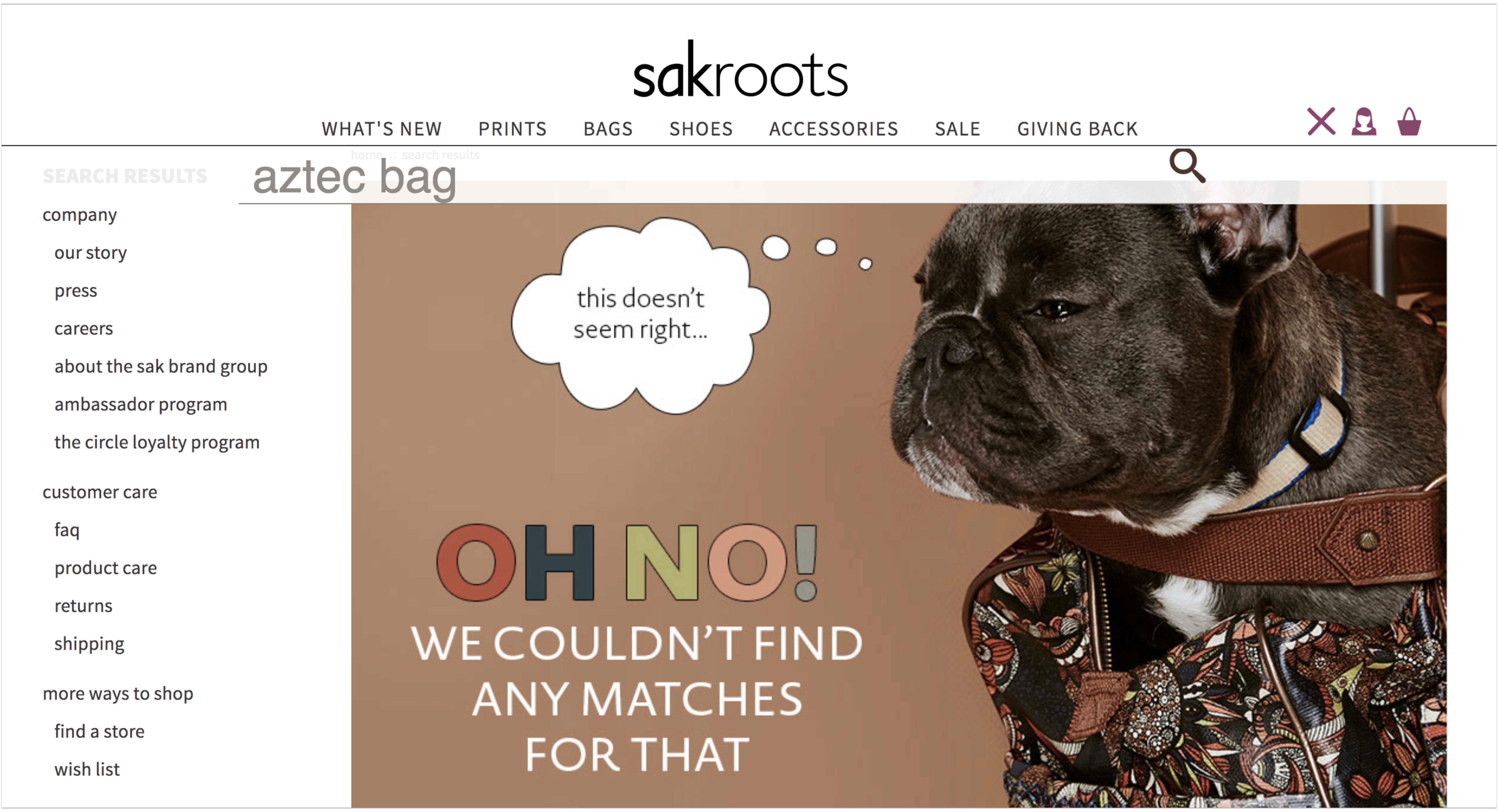
On-site search has a direct impact on the path to conversion.
When someone uses the search bar on your site, it’s the start of a dialogue. Your visitor is telling you what he/she wants from your website. In fact, onsite search is one of the best ways to get visitor intent on your site. And visitors who use your onsite search usually have a high level of motivation and purchase intent.
But when your website search doesn’t function as well as it should, it becomes a barrier between users and their desired destination pages. That translates to a wasted opportunity for engaging and converting a potential customer.
Below we’ve listed six ways to make sure your website search engine provides the best possible user experience and paves the way for conversion.
Optimizing On-Site Search
The job of your internal site search is to quickly get your visitors to the products or content the need. Making your on-site search a seamless and painless process is critical to helping visitors in their conversion path.
1. Place your search bar in a conspicuous area
If visitors can’t see it, then it doesn’t exist.
Your search bar should be placed in a highly visible spot. You’d do well to follow web conventions by placing the search option in a prominent part of the website header or sidebar, so people can locate it effortlessly. Don’t place it too near other boxes (e.g. newsletter sign-up fields), as that could be confusing for users.
Also, it should be immediately obvious to visitors what the search bar does. Putting a magnifying glass icon and a label along with the button should help visitors easily identify the input field for search and what to do to start a query.
2. Improve results for frequent searches
If a lot of visitors use the search option in your website, chances are good that you’ll see frequent user queries in your search logs.
Review the results returned on common and popular queries to ensure that your website search algorithm displays the most relevant items. If not, then you should do some manual adjustments to bring the most relevant results to the top of the list. You can go even further by featuring frequently searched items, products, or information on your home page. This way, visitors can easily find what they’re looking for.
Make sure to regularly check your on-site search history. This is easy to set up in Google Analytics, and it will allow you to monitor on-site search trends and resolve any on-site search-related problems that come up.
3. Make it easy for users to search
Don’t presume that your visitors will be adept at using your on-site search option. It’s better to prepare your internal search for less tech-savvy users by implementing additional features and tools that’ll help make searching a no-brainer.
Use predictive search
Predictive search shows visitors popular or suggested search queries based on the words they’ve inputted in the search box.
By predicting the search query, an e-commerce site like Kohls.com gently nudges the visitor towards the item or category they want while saving them the effort of typing.
Accommodate synonyms and substitute terms
Visitors often don’t know the exact terms for their search queries. They’ll type in whatever word or phrase seems appropriate. Ensure your internal site search is configured to handle synonyms and alternate terms to avoid it returning incomplete or zero results which could frustrate users.
Enable Filtered Navigation
Filters help visitors sort through search results with the least amount of effort and time. Filtered navigation is a must not only for e-commerce sites with a substantial product catalog but even for business-to-business (B2B) sites with a significant amount of content.
Enabling filters and/or facets in on-site search navigation allows users to refine the results to a granular level based on their preferences. By applying filters based on price, brand, color, type, ratings, the user removes unwanted items from their search results. This narrows down the options and helps them get closer to the exact match of what they’re looking for.
4. Improve relevance with semantic search
According to Inbenta founder and CEO Jordi Torras, 60 percent of users use 3 words or more in on-site search. This means that during search, people’s query patterns are closer to natural language or everyday speech.
Google knows this, which is why it has sought to enhance the semantic processing capabilities of its search engine. This is how Google (and other major search engines) is able to anticipate your search query with uncanny precision. The goal of semantic search is simple: to emulate the way people normally speak and process search phrases accordingly.
Without semantic search, your internal search engine can easily miss contextual cues and get lost in the intricacies of the human language.
The example above shows how on-site search devoid of natural language processing treats search queries as unconnected terms and retrieves results based on keywords. In contrast, semantic search utilizes user intent and context to deliver more relevant results.
5. Improve results for search failures
If you’ve ever encountered a “zero results” page after an on-site search, then you know it’s a frustrating experience.
To web users, a failed search is a dead end. Most of them will assume you don’t have what they’re looking for and leave right after seeing “no results”.
A better way to handle search failure is to provide visitors with a navigation path forward. Google’s Matt Cutts recommends showing users items that are related to their search query, for instance, instead of the dreaded “no results” page. You can also suggest a category visitors might be interested in browsing underneath the “zero result” messaging.
There are also times a search failure happens due to typo errors and misspellings. In this case, your on-site search should support users by providing options for correcting spelling errors (e.g. suggested queries) or by automatically retrieving results for the corrected spelling of the search term.
6. Continuously find out where you’re failing
Website optimization initiatives are a work in progress. Perfecting your on-site search is no different.
It’s always a good idea to monitor your analytics data for on-site search performance and areas for improvement. Two behaviors you should regularly check for are search refinements and exits since these could indicate how well your on-site search is doing.
- A high percentage of search refinements, for instance, could mean that users don’t typically find what they want on the first attempt, but they’re encouraged by the promising results to try again.
- A high percentage of search exits, on the other hand, is a sign that your on-site search has serious issues. It is very likely that users are getting irrelevant results and give up on the search due to the awful experience.
Once you know how your on-site search is performing, you can make the necessary adjustments to the configuration and see if your search metrics improve.
Design your on-site search for conversion
A website’s internal search can make or break conversions.
Your visitors’ on-site search experience – whether they find what they want on your site or not, and how easy it was for them to find it – can spell the difference between an exit or a purchase. Put some effort into making internal search easier for your visitors by providing helpful tools and improving results. Pay attention to the needs of searchers, and they’ll convert in no time.
Work with the best!Kickstart your optimization with a 90-minute Website Review from the pioneers in conversion rate optimization. Our CRO experts at SiteTuners can help diagnose your website from a conversion and usability perspective. |




